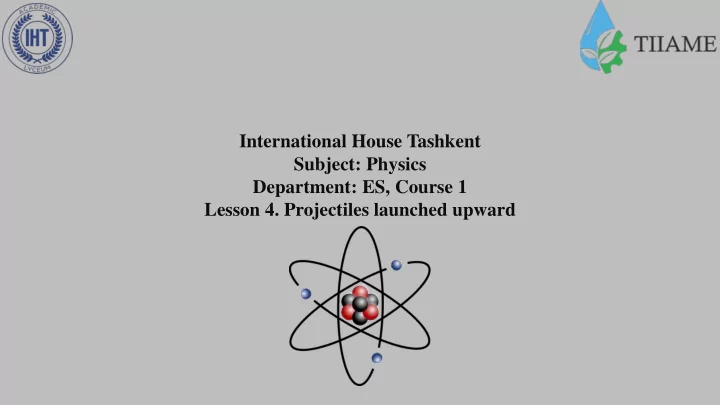

International House Tashkent Subject: Physics Department: ES, Course 1 Lesson 4. Projectiles launched upward
How does a projectile launched from the ground differ from a free falling object? • Any projectile is a free falling object under the influence of gravity. • The only difference is that the projectile has to go up, before it can come down.
Notice the arch of the ball thrown here: The ball has a horizontal velocity component that does not change - Similar to throwing the ball off the cliff. It also has a vertical velocity vector that is under gravity’s effect. This component is similar to one drawn if the ball was thrown straight up
Determining the height and distance of a projectile: • Step 1: Find the component velocity vectors of the take-off velocity. y Horizontal speed: x = Cos Ө x 50 m/s x Vertical speed: y = Sin Ө x 50 m/s
• Step 2: Using the vertical velocity component, determine the length of time the projectile is in the air. Find the time to reach a velocity of 0 m/s at the top. Then, multiply by 2 for the complete path. v top = 0 v f - v i = gt m/s t = v f - v i 9.8 m/s v i v f Total time in air = t x 2
Step 3: Using the time that the projectile takes to reach the top of the path, calculate the height Assume the projectile travels only vertically straight up or down. Use the free-falling equation for distance. (distance traveled upward) of the path. d height = 1/2gt 2
Determining the distance the projectile will travel: Step 4: Using the horizontal velocity component, determine how far the projectile will Assume the projectile travels only horizontally forward. travel. Use the linear motion equations. d = vt (where t = the total time in the air )
Recommend
More recommend